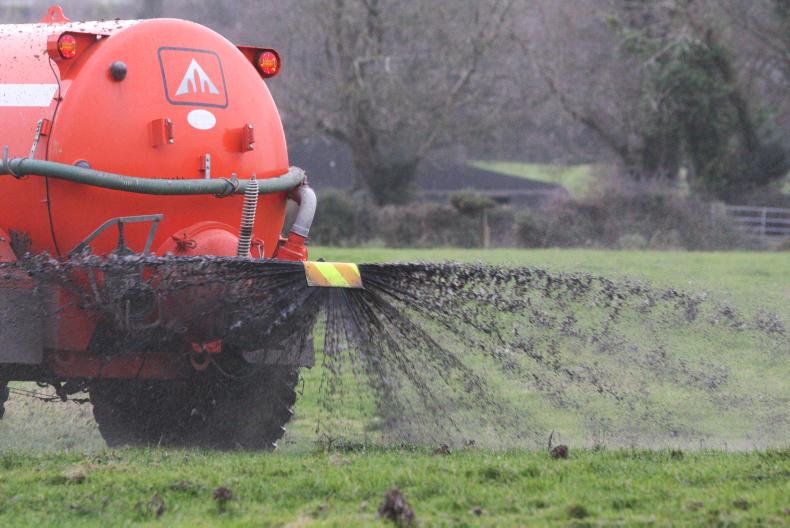With ground conditions still saturated, the chances of getting out with the vacuum tanker in the coming weeks are small. If tanks are almost full, look at moving slurry from one tank to another within the yard or between yards, if possible.
An alternative is to export slurry, but that will rely on the ability of the receiving farmer to store it and to be able to import it, based on their fertiliser plan. Where slurry is being exported, ensure that Record 3 forms are filled up for the exporting and importing farmer. A copy of these records needs to be submitted to the Department of Agriculture prior to the year end.
Don’t apply slurry too thickly, as it will affect grazing later on. Try and wait for a dry period to spread and avoid spreading on waterlogged land. The bigger issue on most farms is grass cover. Where possible, try to spread slurry on fields with 5cm to 6cm of grass, as spreading slurry on heavy covers (8cm to 10cm) will have a negative impact on grass utilisation, with stock finding it hard to graze it out.
Read more
Don’t underestimate the black stuff
Beef management: supplementing calved cows
Beef management: lice
With ground conditions still saturated, the chances of getting out with the vacuum tanker in the coming weeks are small. If tanks are almost full, look at moving slurry from one tank to another within the yard or between yards, if possible.
An alternative is to export slurry, but that will rely on the ability of the receiving farmer to store it and to be able to import it, based on their fertiliser plan. Where slurry is being exported, ensure that Record 3 forms are filled up for the exporting and importing farmer. A copy of these records needs to be submitted to the Department of Agriculture prior to the year end.
Don’t apply slurry too thickly, as it will affect grazing later on. Try and wait for a dry period to spread and avoid spreading on waterlogged land. The bigger issue on most farms is grass cover. Where possible, try to spread slurry on fields with 5cm to 6cm of grass, as spreading slurry on heavy covers (8cm to 10cm) will have a negative impact on grass utilisation, with stock finding it hard to graze it out.
Read more
Don’t underestimate the black stuff
Beef management: supplementing calved cows
Beef management: lice






 This is a subscriber-only article
This is a subscriber-only article










SHARING OPTIONS: